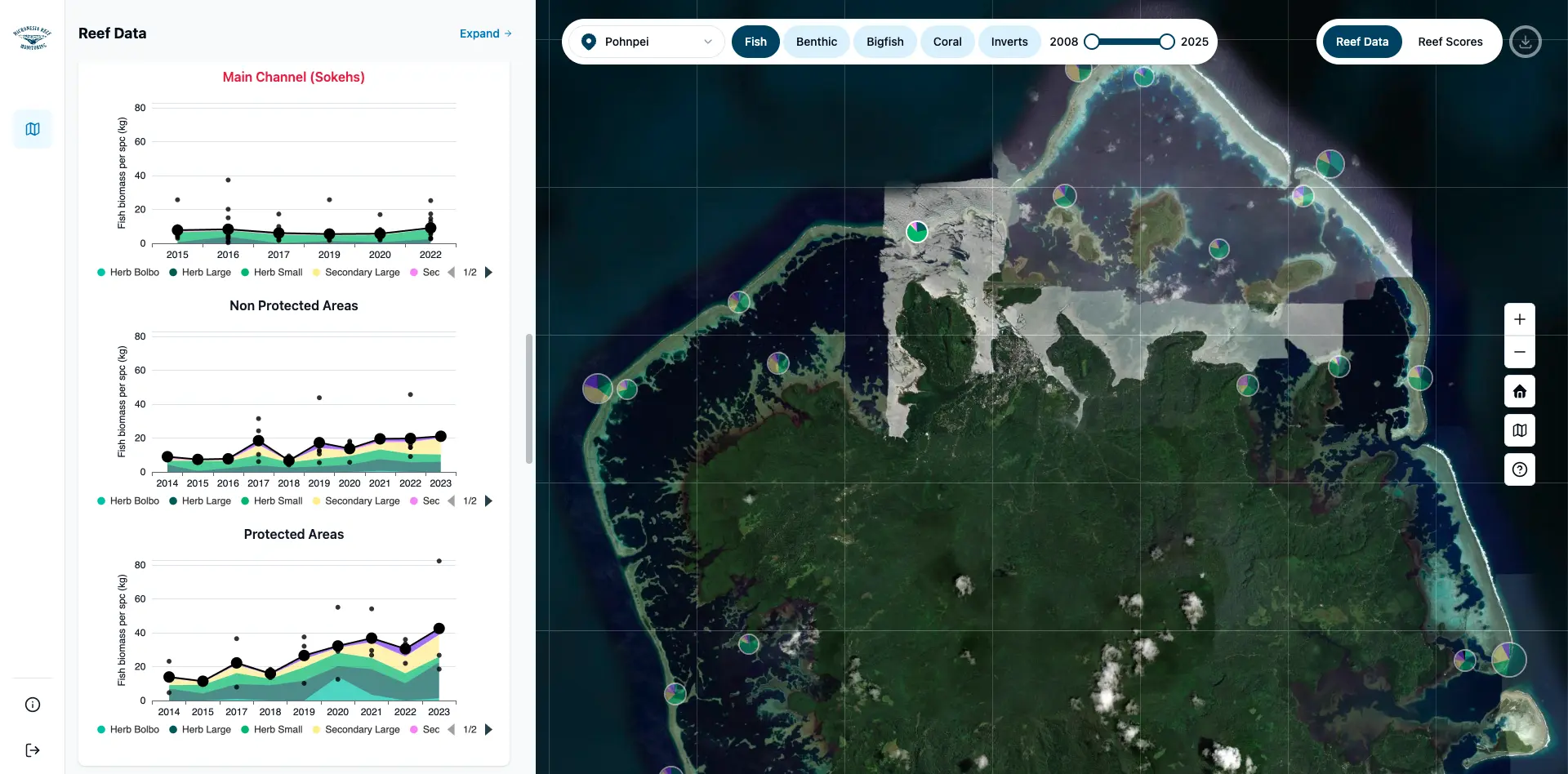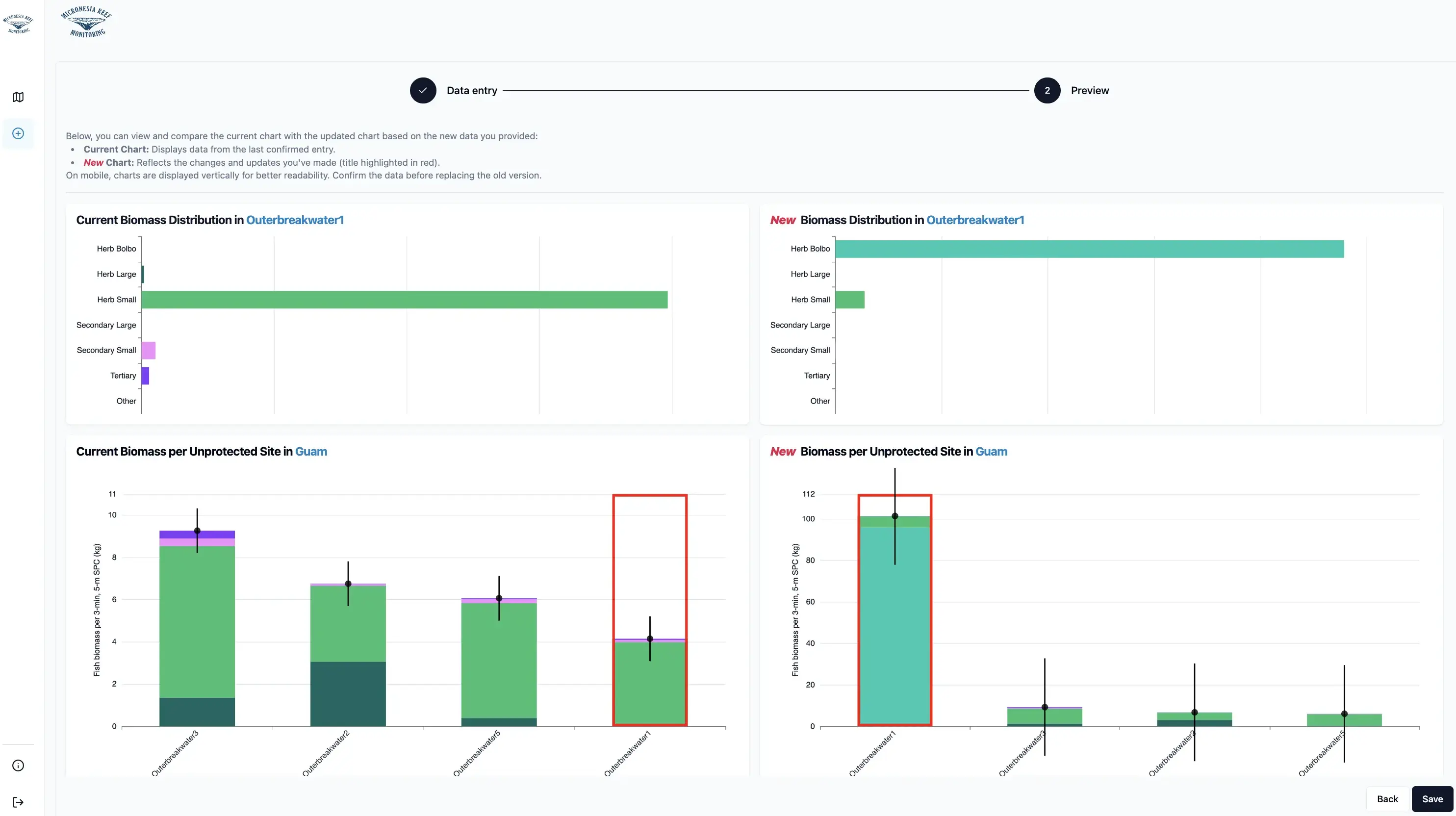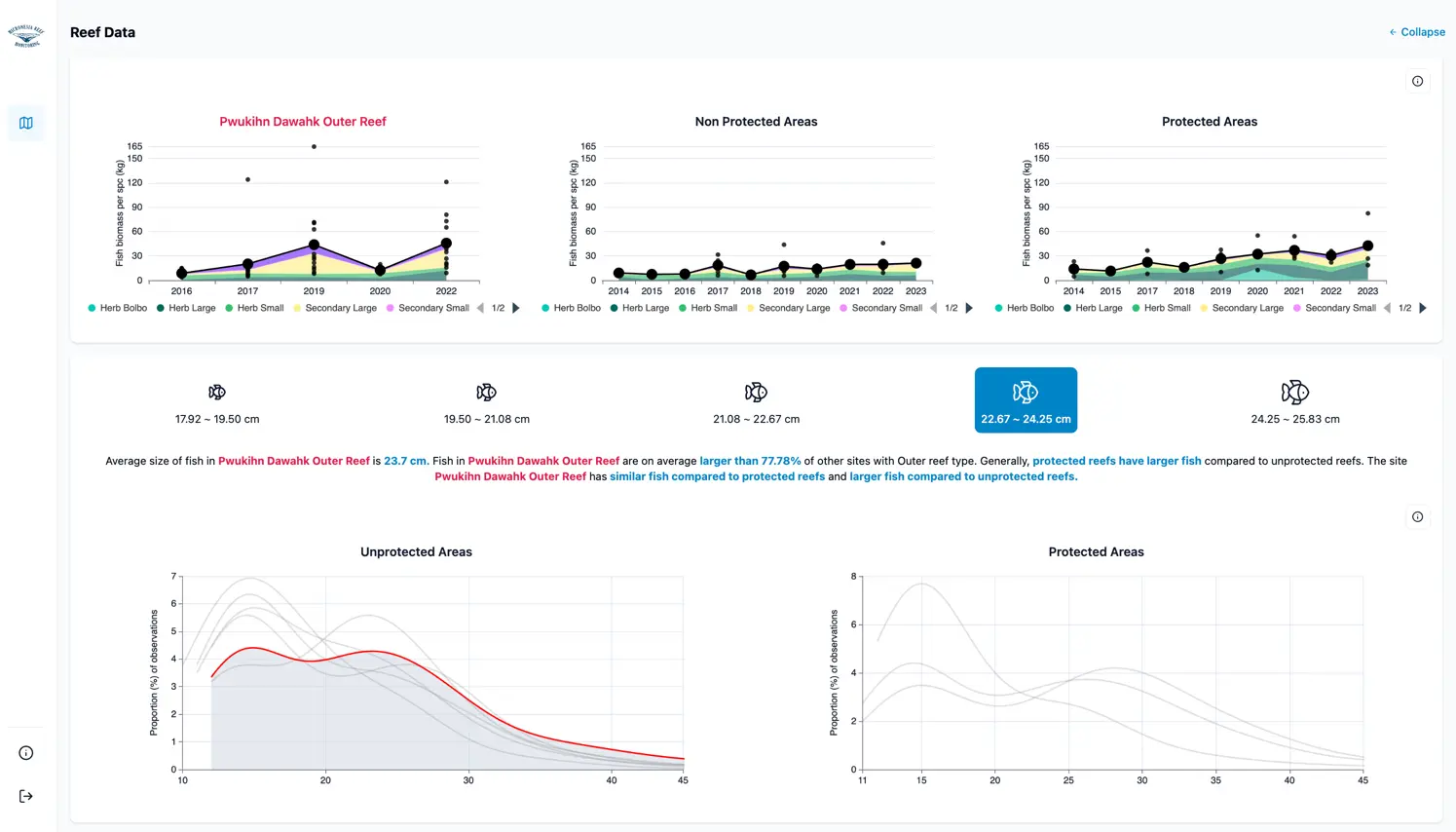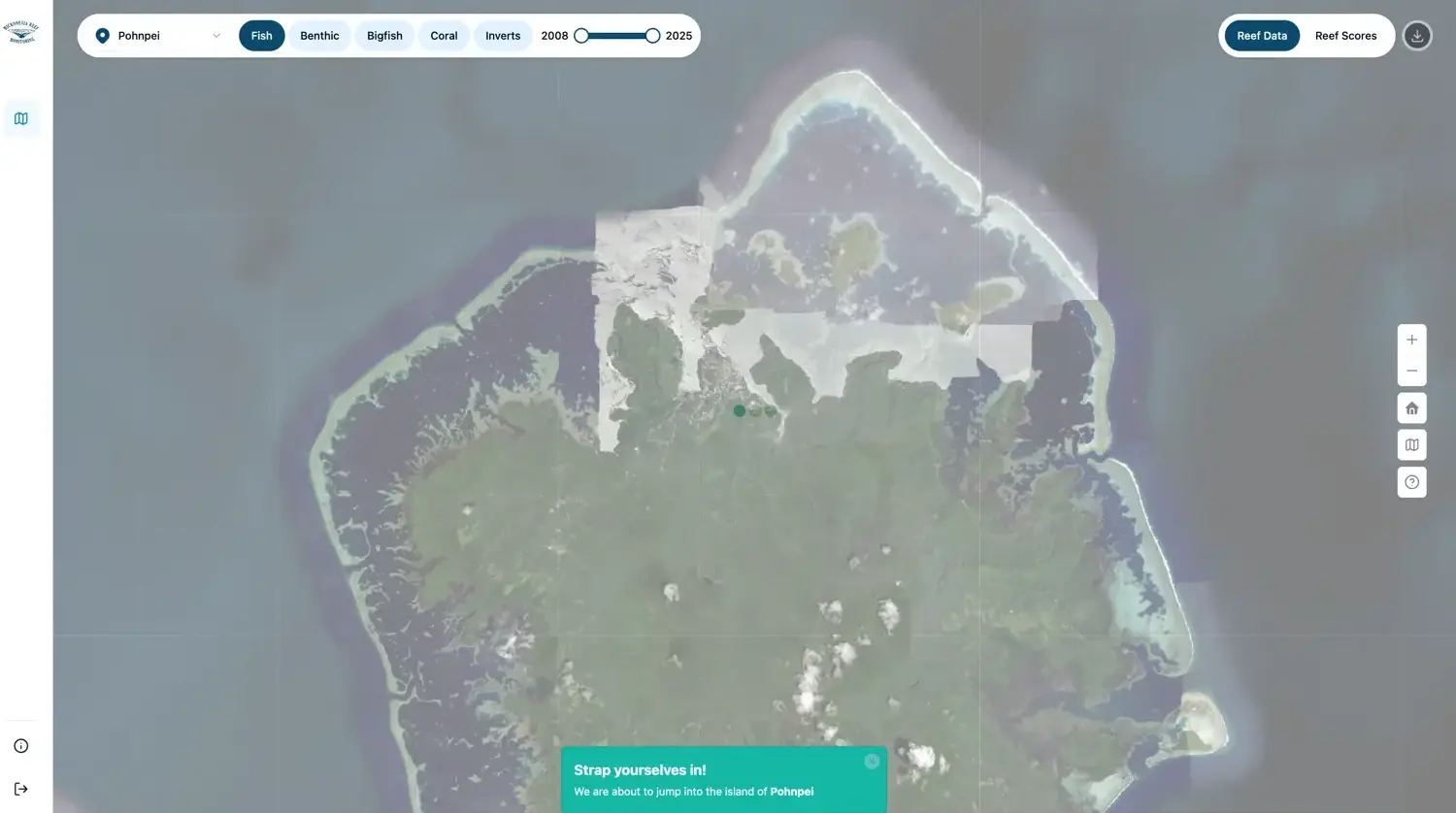Modernizing Marine Data Visualization & Entry: From R Shiny & Angular to a Unified React SPA

🧭 Modernizing Marine Data Systems: Unifying R Shiny and Angular Tools into a Seamless React SPA
Client Sector: Marine Conservation & Research
Client: University of Guam (UOG) Marine Lab and Micronesia Coral Reef Monitoring Network
Service Type: Full-Stack System Modernization
Technologies Used: React, Django, R Shiny, Angular, Python, Pandas, Numpy, Scipy
🔗 Explore more blog posts from the Micronesia Reef Monitoring series here
📌 Executive Summary
UOG Marine Lab and the Micronesia Coral Reef Monitoring Network previously maintained two separate tools:
- An R Shiny application for data visualization and modeling
- An Angular-based data entry platform for field teams
The goal: unify both into one modern, scalable platform.
The result: a robust React SPA that boosts performance, simplifies workflows, and enhances collaboration.
🎯 Project Objectives
- Merge R Shiny and Angular tools into one seamless app
- Improve performance and reduce tech debt
- Streamline UX for field and lab researchers
- Reduce input errors via smarter interfaces
- Empower evaluation of real conservation actions—not just MPA metrics, but broader interventions like grouper spawning aggregation protection, fish size regulations, and climate recovery monitoring
Marine Protected Areas are vital, but reef protection needs more. This portal helps evaluate diverse actions like grouper spawning aggregation closures, fishery regulations, and reef recovery under climate stress—a core feature researchers rely on.
⚛️ Why React?
React was chosen for its:
- Component-based architecture for modularity
- Rich ecosystem for interactive and scientific tools
- High performance with large datasets
- Ideal support for iterative, cross-functional development
🔧 Modernization Approach
🤝 Co-Creation with Field Teams
We worked directly with the field team’s researchers to understand how the tools are really used, building something that reflects their day-to-day needs.
"I think it's pretty clear but a bit of discussion may help us improve the overall structure and love your input as always." - Peter Houk, Principal Investigator, UOG Marine Lab and Micronesia Coral Reef Monitoring Network.
📊 Enhanced Data Visualization
- Combined maps and charts with filters and tooltips
- Toggling views between trends and micro data

📝 Smarter Data Entry
- Context-aware forms to guide cleaner input
- Live preview shows the effect of data before submission


⚙️ Backend Enhancements in Django
- Batch APIs for bulk uploads
- Intelligent caching & preprocessing
- Parallelized backend processing for speed gains

🔄 Transition from R to Python
- Rewrote key analytics using Pandas, Numpy, and Scipy
- Offloaded heavy computation to backend
- Faster loading, same analytical fidelity

🌍 Field-Ready UX
- Responsive layouts optimized for tablets
- Unified, consistent visual language
- Works well even in low-bandwidth conditions
✅ Results & Outcomes
- Unified workflows in one platform
- Faster and more confident data entry
- Collaborative features for multi-user work
- Scales easily with growing data needs
- Easier maintenance and continuous delivery
“Now, all is working very well. Thank you so much for all the hard work getting this released. Ready to share this with our user community for their experiences and start even broader outreach.” — Peter Houk, Principal Investigator, UOG Marine Lab and Micronesia Coral Reef Monitoring Network.
💡 Lessons Learned
- Collaborate early and often with end users
- Modernization should evolve, not erase
- Backend efficiency drives frontend success
- React's modularity supports incremental progress
🚀 Final Thoughts
By unifying UOG Marine Lab & Micronesia Coral Reef Monitoring Network’s core digital tools into a modern React SPA, we delivered a faster, smarter, and more collaborative research experience—built with and for the people using it daily.
Ready to transform your systems with intention? Let’s build what’s next.
📚 Explore more case studies from the Micronesia Reef Monitoring initiative here.